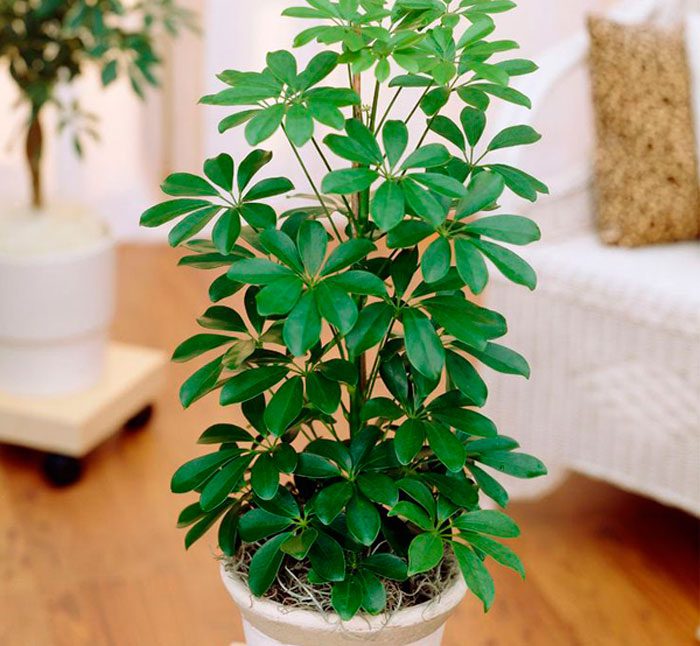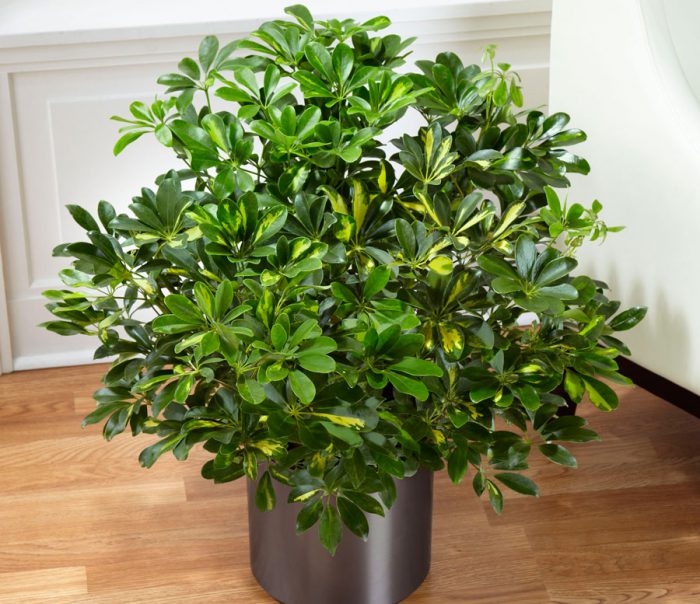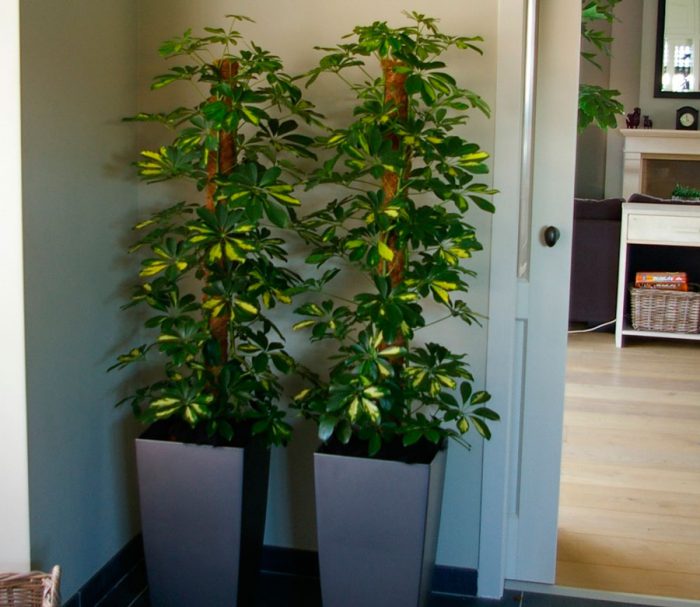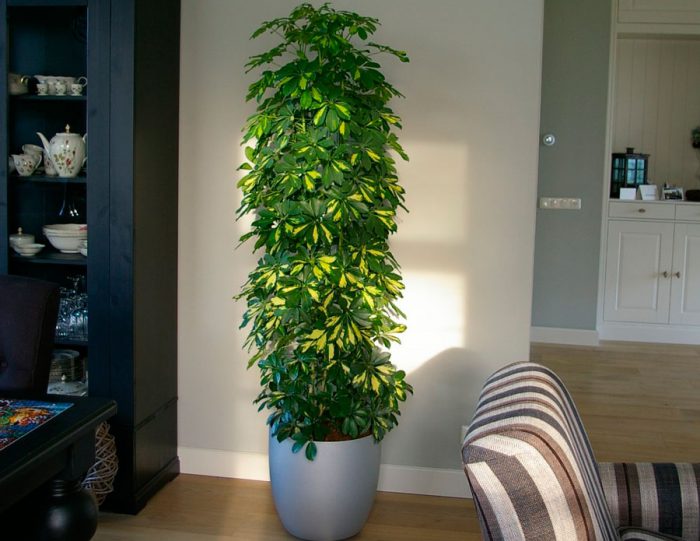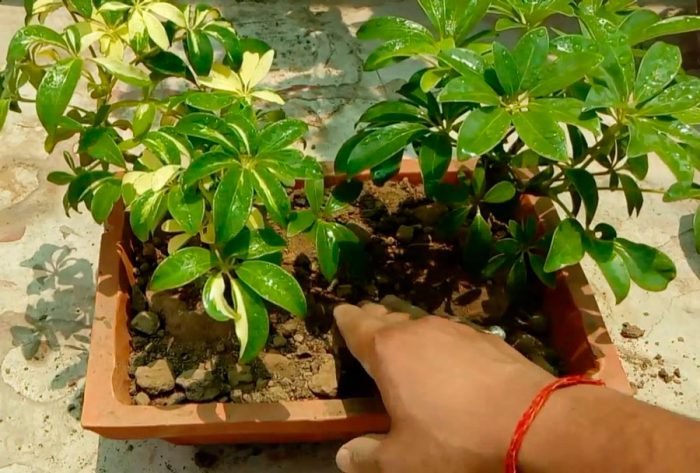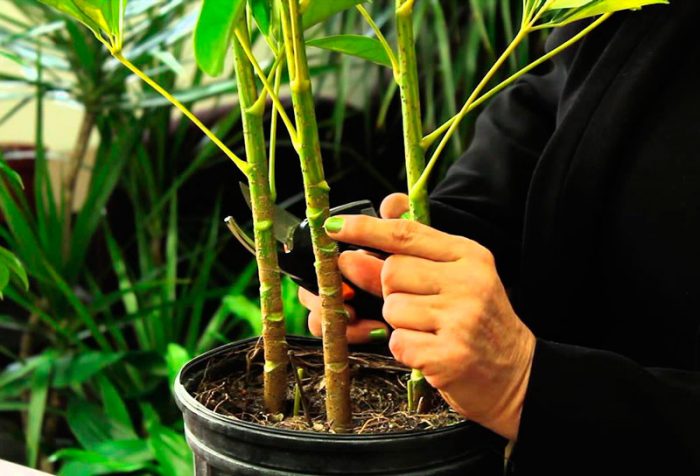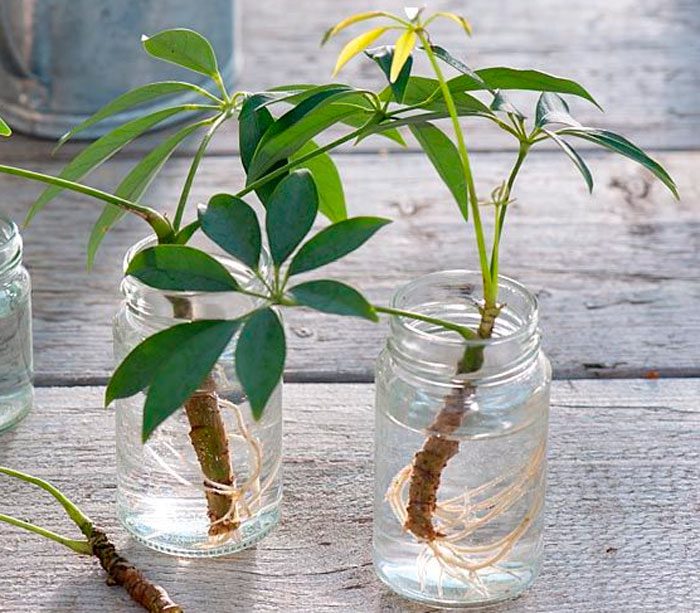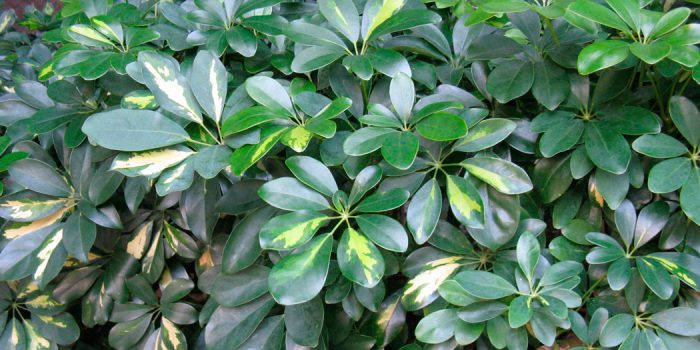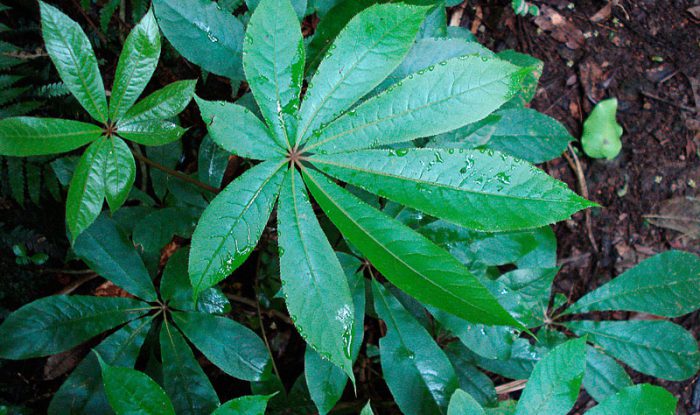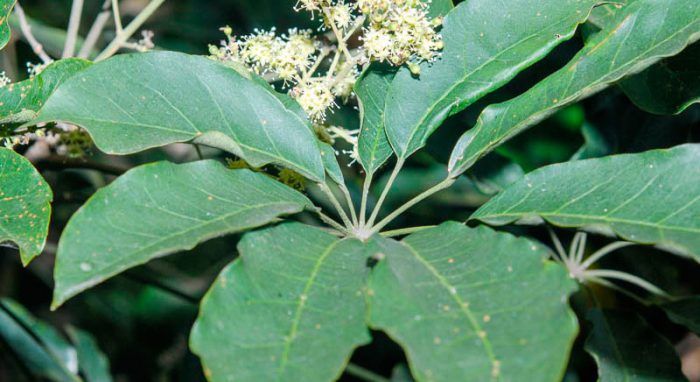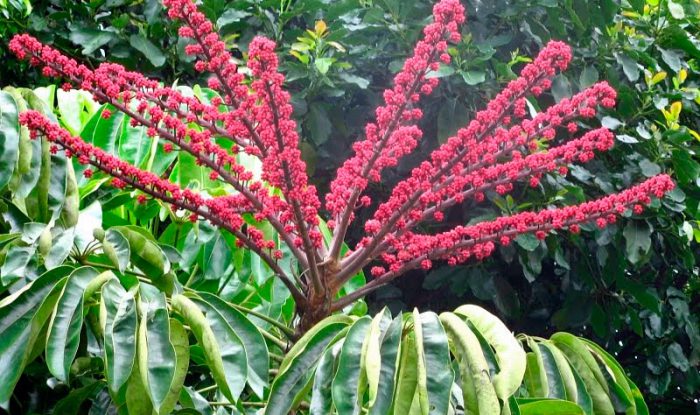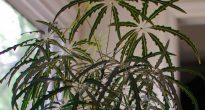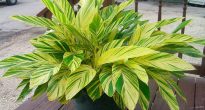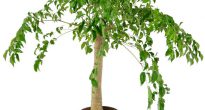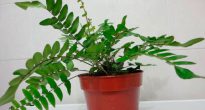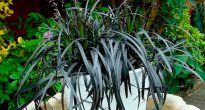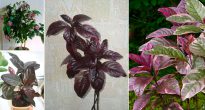A plant like cheflera or sheffler (Schefflera) belongs to the family called Araliaceae. In the wild, it can be found in the tropics in any part of the earth. And most often it is found in Australia, China, the Pacific Islands and Japan. Wild-growing shefflera is not very large trees or bushes.
This plant is very much appreciated by flower growers for beautiful, showy leaves that are very similar to a human palm, whose fingers are spaced far apart. The leaf blades are located on a high petiole and are dissected into 4–12 lobes that grow from the 1st point. In some countries, this flower is called the umbrella of the gnomes or the umbrella tree.
The elongated racemose inflorescences of this plant are very similar to tentacles or antennae. But you can look at them only in the botanical garden, and all due to the fact that the sheffler does not bloom in indoor conditions. But she is able to decorate any room thanks to her graceful shape and spectacular foliage.
This flower is very often grown as a ficus benjamin, or rather, it is grown as a large domestic tapeworm plant, forming it in the form of a bush having a sufficiently large size or a tree.
The tall shoots of such a plant are not very thick, which is why often several young shefflers are planted in one pot at once. And then they form a common stem (intertwined). If only one tall flower is planted in the pot, then a support is usually made for it.
This plant is easy enough to grow indoors, and this is because it is completely undemanding and unpretentious. You need to care for him in almost the same way as for other common house plants.
Note! In the chefler there are substances that, if they get on the mucous membrane or skin, can cause irritation. Therefore, in any manipulation with it, you need to be careful.
Caring for the sheflera at home
Illumination
This plant is very fond of light. In the autumn-winter period, it should be placed on a windowsill located on the south side of the room. In summer, it must be shaded to exclude direct sunlight.
An adult sheffler is placed near the window located in the southern part of the room, but the west or east side is also suitable. If there is little light in the room, then it is preferable to choose varieties with green foliage for growing, since variegated ones are very light-requiring.
In the warm season, it is best to take the plant out into fresh air. You need to place it in a small partial shade.
Moisture
Feels comfortable in high humidity, but can easily adapt to normal room. However, at the same time, the sheffler needs to be regularly sprayed with soft and warm water (settled).
Temperature regime
Schefflera grows well and develops at normal room temperature. In winter, the air temperature can drop to 16⁰ – 18⁰ С, but not less than 12⁰ С.
Do not allow a cold draft in the room where this plant is located, and also do not place it next to heating devices. Not very large daytime temperature fluctuations (between night and day) only benefit the sheffler.
How to water
Watering should be systematic and moderate. For this, settled soft water is perfect. Make sure that the earth bed does not dry out in any way. In winter, the amount of watering is significantly reduced. Remember that for this plant, stagnation of water and souring of the soil is not allowed, as it may die as a result. And for irrigation, you need to use water at room temperature and in no case cold.
Fertilizer
The sheffler is fed with universal fertilizer for domestic plants. Top dressing is done a couple of times a month during the growing season (in the spring and summer). After transplanting, fertilizers are applied to the soil only after young leaves appear.
Pruning features
In order for the bush to be more magnificent, several plants are often sown in one flower pot. They acquire a tree-like shape by pruning. However, if it is done in violation of the rules, then it can bring harm to the sheffler.
In the event that all the leaves of a plant fall off (with improper care), it can be saved by performing low pruning. However, this is only if the root system is healthy. The tree stump should be watered, and it is recommended to cover it with moistened moss. If everything is done correctly, then after a while young shoots will begin to grow.
Dormant period
In winter, the sheffler has a period of relative dormancy, during which it does not grow. The plant during this period should be in a bright room, the air temperature in which will be approximately 14⁰ – 16⁰ С. Watering should be reduced.
Transplant rules
While the plant is young, transplantation should be carried out annually with the onset of spring. An adult sheffler is transplanted only when necessary, usually once every few years. When transplanting, a flower pot is selected several times larger than the previous one. Don't forget good drainage.
Which soil to choose
For transplanting, it is worth choosing a slightly acidic (pH not higher than 6), light soil. For this, a mixture consisting of fibrous peat, sand and humus earth, taken in a ratio of 1: 1: 3, is perfect. And you can also mix sand, humus and sod soil in a 1: 1: 2 ratio.
Breeding features
This plant can be propagated by cuttings, sowing seeds, and air layers are also used for these purposes.
Scheffler seeds can be easily purchased at a flower shop. They are sown, as a rule, in January or February. They are sown in a mixture of sand and peat, taken in equal proportions. Before this, it is recommended to place the seeds in water for a while, to which zircon or epin is added. After sowing, the soil is moistened with a sprayer, and after that the container is removed to a place where it is warm enough (20⁰ – 24⁰ C). Also, don't forget to cover it with glass or plastic. The soil should be periodically ventilated and moistened. After the appearance of 2 or 3 true leaves, the seedlings are planted in small pots.
For propagation by cuttings, you will need semi-lignified cuttings. For rooting, they are planted in a mixture of peat and sand, pretreated with means that stimulate the formation of roots. The container must be covered with plastic wrap, and the temperature must be maintained within 20⁰ – 22⁰ С. Do not forget to remove the film for airing the cuttings.
Pests and diseases
Sheffler may have spider mite, aphids, shield.
Common problems and their causes
When growing this plant, the following problems may appear:
- Falling leaves... Possible reasons: cold draft in winter, too high air temperature in summer, waterlogged soil (root rotting has begun).
- Light spots on foliage... The reason for this may be direct sunlight hitting it.
- Elongated shoots and faded leaves - there is not enough light.
- If the air humidity is too low, the tips of the leaves will turn brown.
Types and varieties of Sheflera with photos
Schefflera arboricola
It is a small tree with a branching trunk (erect). The old branches of this tree are light brown in color, and the young ones are green. Complicated pinnate leaves can be up to 20 centimeters long. On the foliage of some species, spots of yellow, cream or white may be present.
Schefflera Digitata
This species is not very tall. Its dissected leaves with wavy edges have 7 to 10 lobes. Variegated varieties look especially beautiful.
Schefflera octophylla
On one drooping petiole there are from 8 to 12 leaves, the shape of which is elongated-lanceolate. Also, the leaves have veins of a light shade and pointed tops. If the leathery, shiny leaves are olive green in color, then they are still young, and over time they turn green.
Schefflera radiant or star-leaved (Schefflera actinophylla)
It has long petioles, which are colored brownish-reddish. Its shiny leaves, depending on the variety, are colored yellow with a golden or olive tint, as well as rich green.


Watch this video on YouTube

